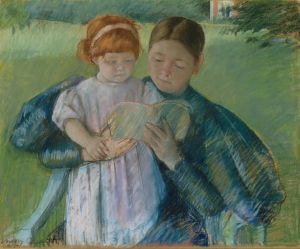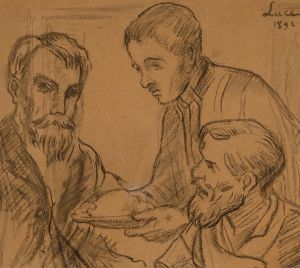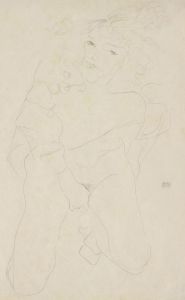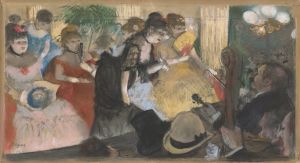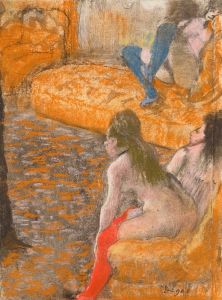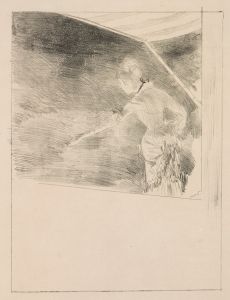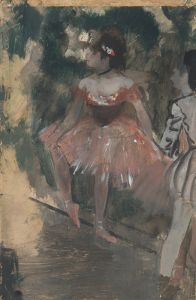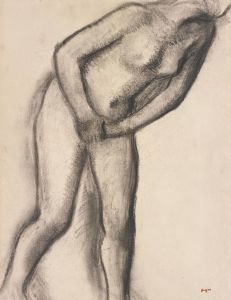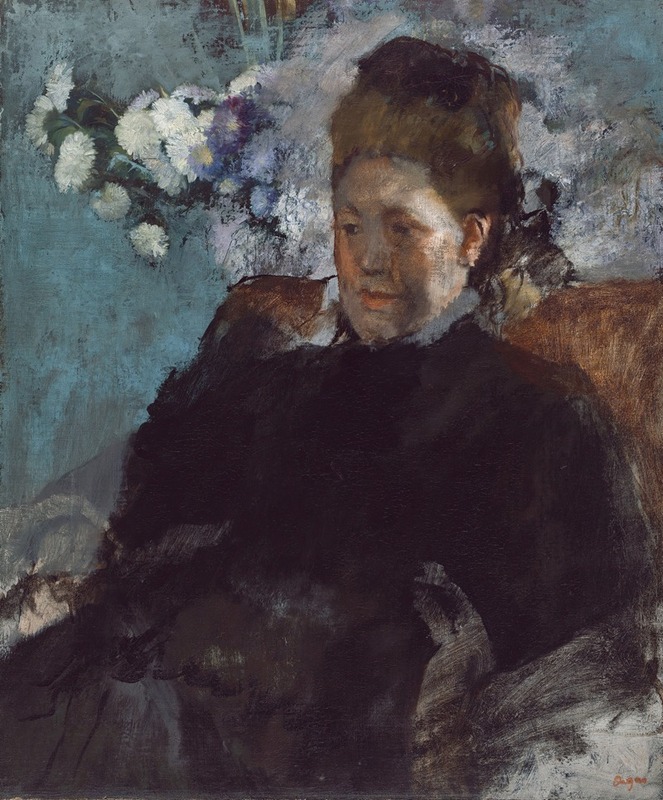
Portrait of a Woman
A hand-painted replica of Edgar Degas’s masterpiece Portrait of a Woman, meticulously crafted by professional artists to capture the true essence of the original. Each piece is created with museum-quality canvas and rare mineral pigments, carefully painted by experienced artists with delicate brushstrokes and rich, layered colors to perfectly recreate the texture of the original artwork. Unlike machine-printed reproductions, this hand-painted version brings the painting to life, infused with the artist’s emotions and skill in every stroke. Whether for personal collection or home decoration, it instantly elevates the artistic atmosphere of any space.
Edgar Degas, a prominent French artist known for his contributions to Impressionism, created "Portrait of a Woman" during a period when he was deeply engaged in exploring the nuances of human expression and form. Degas, whose full name was Hilaire-Germain-Edgar De Gas, was born on July 19, 1834, in Paris, France, and became renowned for his paintings, sculptures, prints, and drawings. His work often focused on dancers, women at work, and intimate portraits, capturing the subtleties of human emotion and movement.
"Portrait of a Woman" is one of Degas's many explorations of the female form, a subject he returned to frequently throughout his career. While the exact date of this painting is not definitively known, it is believed to have been created in the late 19th century, a time when Degas was actively experimenting with various techniques and mediums. This period was marked by his transition from traditional methods to more innovative approaches, influenced by his association with the Impressionist movement, although he preferred to be called a realist.
The painting showcases Degas's skill in capturing the essence of his subjects through meticulous attention to detail and a keen observation of human nature. In "Portrait of a Woman," Degas employs a subtle palette, using soft, muted colors that highlight the delicate features of the subject. The woman's expression is contemplative, suggesting a moment of introspection or quiet thought. Degas's use of light and shadow adds depth to the portrait, emphasizing the contours of the woman's face and the texture of her clothing.
Degas was known for his ability to convey emotion through posture and expression, and "Portrait of a Woman" is no exception. The composition is carefully balanced, with the woman's gaze directed slightly away from the viewer, creating a sense of mystery and inviting speculation about her thoughts and feelings. This technique is characteristic of Degas's portraiture, where the focus is often on capturing the fleeting, introspective moments of everyday life.
Throughout his career, Degas was influenced by the works of the Old Masters, as well as by contemporary developments in art. He was particularly inspired by the realism of artists such as Ingres and Delacroix, which is evident in his precise and disciplined approach to portraiture. However, Degas also embraced the spontaneity and immediacy of Impressionism, which allowed him to experiment with new techniques and perspectives.
"Portrait of a Woman" reflects Degas's mastery of both traditional and modern elements, combining a classical attention to detail with a fresh, innovative perspective. This painting, like many of Degas's works, offers a glimpse into the private, often unguarded moments of his subjects, capturing the complexity and depth of human experience.
Degas's contributions to art have left a lasting impact, and his portraits continue to be celebrated for their emotional depth and technical excellence. "Portrait of a Woman" remains a testament to his skill as a portraitist and his ability to convey the subtle nuances of human emotion through his art.





